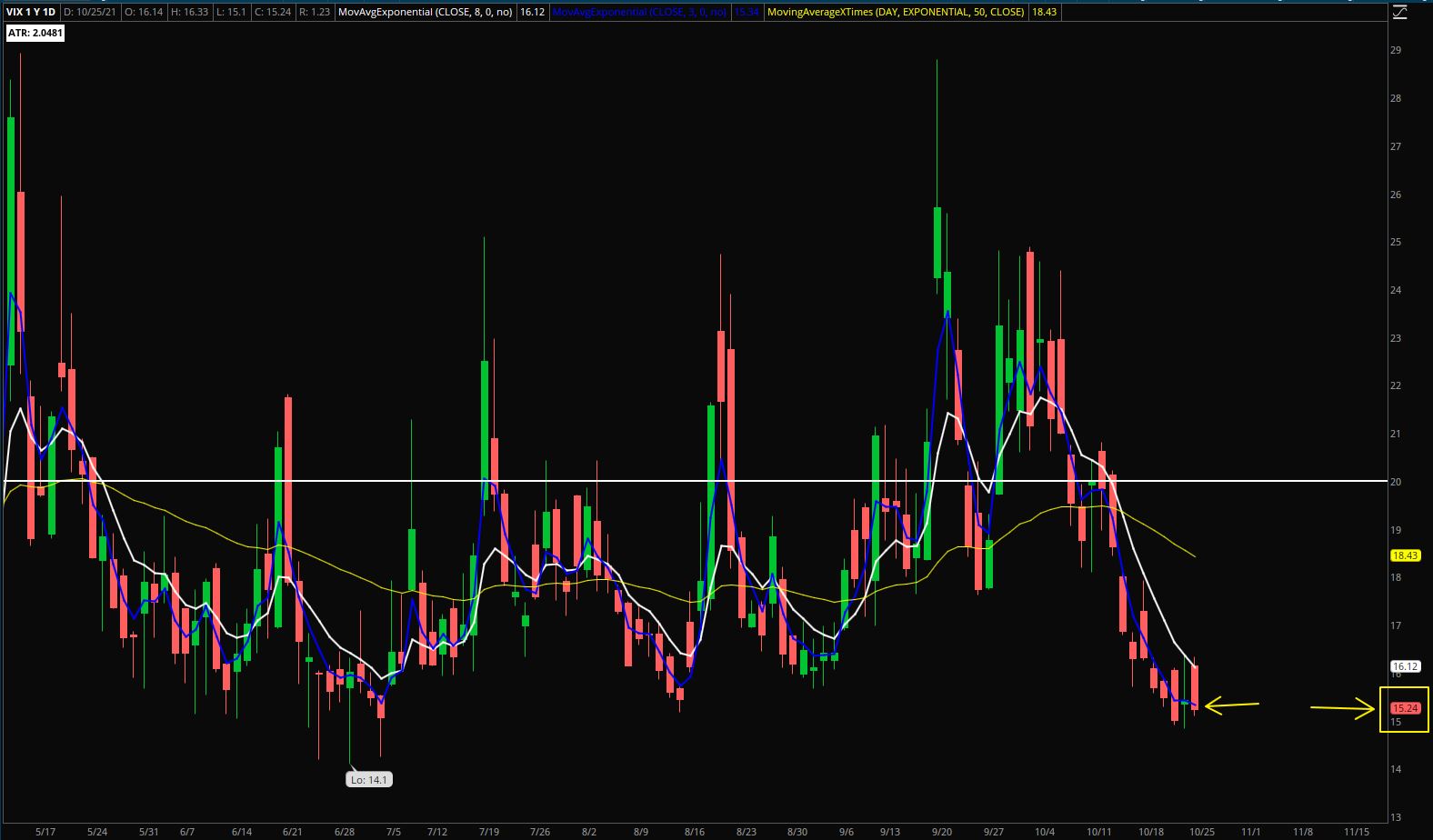What Is Contago In The VIX?
Chris Vermeulen | Oct 28, 2021 10:06AM ET
I have been trading options and coaching / mentoring other new options traders for years. I have seen new traders who were lucky and ended up with some winning trades and others who were so frustrated and on the verge of giving up. I have seen it all. One of the things I have noticed is that very few people understand the CBOE Volatility Index, the fear gauge to the markets.
Many know that it is a measure of fear but they don’t really understand what it is and how it is constructed. If you are an options trader, I would argue it is very important that you as a trader understand what the VIX is and how it works.
According to Investopedia , it is defined as:
- The Cboe Volatility Index, or VIX, is a real-time market index representing the market’s expectations for volatility over the coming 30 days.
- Investors use the VIX to measure the level of risk, fear or stress in the market when making investment decisions.
- Traders can also trade the VIX using a variety of options and exchange-traded products, or use VIX values to price derivatives.
OK, so we have seen the dictionary definition, but how do they come up with the price? VIX index values are calculated using the Cboe-traded standard SPX options (that expire on the third Friday of each month) and using the weekly SPX options (that expire on all other Fridays). Only those SPX options are considered whose expiry period lies within 23 days and 37 days.
So what about VIX futures? VIX futures are a forward-looking price of the future VIX index. If we look at sat November 2021 VIX futures the current VIX index will have to meet that price by either moving up or down. This is called contango.


As you can see from the diagrams the current price of the VIX is 15.24, while the price of the VX futures is 18.60. This means that in the next 23 days these two prices will converge to the same price by day 23. Also, the note range on these is pretty wide. Traditionally, these usually are not that far apart. If the VIX is higher than the futures price then that is called backwardation.
So, what does this mean for options traders?
This means that current volatility is nonexistent, but future volatility is higher. As options traders are primarily sellers, it may not make sense to sell near-term premiums. There is little implied volatility to drive premiums up in the near term. It makes more sense to buy near-term options and better to sell far-term premiums.
So, as you can see, understanding the VIX and how it works can help you as an options trader.

Trading in financial instruments and/or cryptocurrencies involves high risks including the risk of losing some, or all, of your investment amount, and may not be suitable for all investors. Prices of cryptocurrencies are extremely volatile and may be affected by external factors such as financial, regulatory or political events. Trading on margin increases the financial risks.
Before deciding to trade in financial instrument or cryptocurrencies you should be fully informed of the risks and costs associated with trading the financial markets, carefully consider your investment objectives, level of experience, and risk appetite, and seek professional advice where needed.
Fusion Media would like to remind you that the data contained in this website is not necessarily real-time nor accurate. The data and prices on the website are not necessarily provided by any market or exchange, but may be provided by market makers, and so prices may not be accurate and may differ from the actual price at any given market, meaning prices are indicative and not appropriate for trading purposes. Fusion Media and any provider of the data contained in this website will not accept liability for any loss or damage as a result of your trading, or your reliance on the information contained within this website.
It is prohibited to use, store, reproduce, display, modify, transmit or distribute the data contained in this website without the explicit prior written permission of Fusion Media and/or the data provider. All intellectual property rights are reserved by the providers and/or the exchange providing the data contained in this website.
Fusion Media may be compensated by the advertisers that appear on the website, based on your interaction with the advertisements or advertisers.